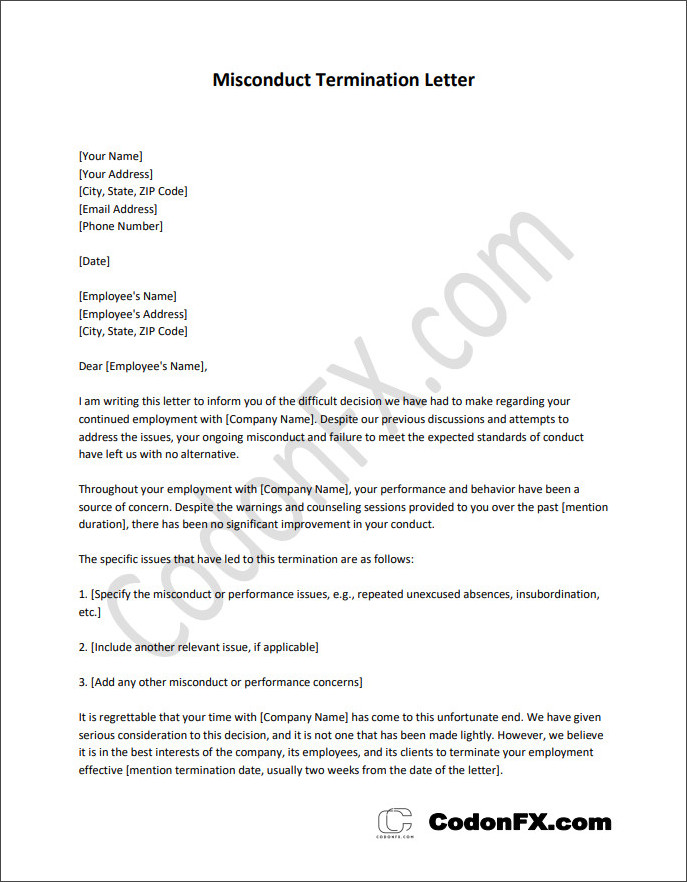
What is a misconduct termination letter?
A misconduct termination letter is a formal document issued by an employer to terminate an employee’s contract due to their misconduct or violation of company policies. It serves as a written record of the termination and the reasons behind it. The purpose of a misconduct termination letter is to clearly communicate to the employee the specific misconduct that led to their termination, ensuring transparency and avoiding any confusion or legal disputes.
One of the main benefits of a misconduct termination letter is that it provides documentation for the employer’s decision to terminate the employee. This can be crucial in case of any legal challenges or claims filed by the terminated employee, as it demonstrates that the employer followed proper procedures and had a valid reason for termination. Additionally, the letter can serve as a deterrent for other employees, highlighting the serious consequences of engaging in misconduct and maintaining a professional work environment.
Furthermore, a misconduct termination letter enables the employer to maintain a clear and consistent approach to handling employee misconduct. It helps establish a precedent for dealing with similar cases in the future, ensuring fairness and consistency in the application of disciplinary actions.
How do you write a termination letter for misconduct?
Here are some key steps to consider when writing a termination letter for misconduct:
- Be specific and concise: Clearly state the employee’s name, position, and the date of termination at the beginning of the letter. Use direct language to outline the misconduct that led to the termination, being specific about the incidents or behaviors that violated company policies.
- Provide evidence: Include any relevant documentation or evidence that supports your decision to terminate the employee. This could include written warnings, performance evaluations, or witness statements. By providing evidence, you can demonstrate that the decision was made based on objective criteria.
- Explain the consequences: Clearly explain the consequences of the employee’s misconduct, such as the impact on the company, other employees, or clients. This helps to reinforce the seriousness of the situation and the reasons for termination.
- Offer support: While the termination letter is primarily focused on the reasons for termination, it is important to offer support to the employee during the transition period. This could include information about severance packages, outplacement services, or assistance in finding new employment.
- Keep it professional: Maintain a professional tone throughout the letter, avoiding personal attacks or emotional language. Stick to the facts and focus on the impact of the employee’s misconduct on the company.
- Consult legal counsel: If you are unsure about the legal aspects of the termination process, it is advisable to consult with legal counsel to ensure that the termination letter is compliant with employment laws and regulations.
Writing a termination letter for misconduct requires careful consideration and attention to detail. By following these steps and guidelines, you can ensure that the letter is clear, professional, and compliant with legal requirements.